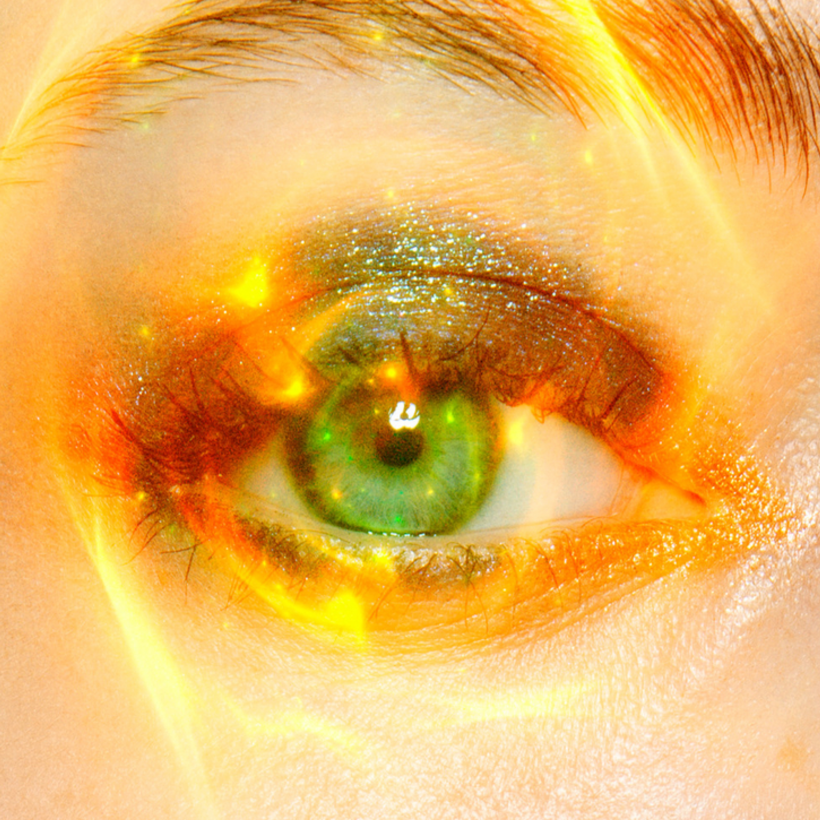I sit in my parked car, trying to slow my heart rate. My hands are shaking. I wonder if there are any bags I can breathe into. Would the silky one that holds my jumper cables work? Every part of me wants to turn on the ignition and drive home. You’d think I was preparing to base jump or face a cancer diagnosis. Instead, I’m about to go on a first date with a random guy named Brent, who I met on Hinge. He likes “women who don’t take themselves too seriously.”
People are always surprised by my debilitating anxiety around dating. I’m generally outgoing, confident, and—as my friends have assured me—not a complete ghoul. So when I tell people that the mere idea of a date makes me want to crawl under my bed, they brush me off. Everyone gets nervous before dates; it’s normal. It’s too much effort to convince them I don’t simply “get nervous”—I have full mental breakdowns that require an Imodium and a lot of deep breathing into the mirror just to get out the door.
As you can probably imagine, I haven’t dated much. On the rare occasions I forced myself, it was excruciating. Not an ideal predicament for a single 34-year-old looking for a long-term relationship. As it turns out, it’s fairly hard to find the love of your life when you’re inside your apartment watching Bones reruns.
My therapist was the one who first suggested E.M.D.R. It sounded like something offered at a Brentwood MedSpa, but she assured me it was a proven therapy method. Initially developed for people with post-traumatic stress disorder, E.M.D.R. stands for “eye movement de-sensitization and reprocessing” and is used to treat mental-health symptoms resulting from traumatic memories. As the American Psychological Association explains, “Past disturbing experiences.... continue to cause distress because the memory was not adequately processed,” and E.M.D.R. therapy “is intended to change the way that the memory is stored in the brain.” Or, as the TikTok therapists say, “if it’s hysterical, it’s historical.” My aversion to dating was so extreme that my therapist thought maybe it was actually tied to a past traumatic experience. She wanted to know: Have men always made me nervous? Could I think of anything that might trigger this?
Some background: I was a really husky kid (“husky” being the word well-meaning relatives used to describe it in the 90s). My weight wasn’t TLC-show-level concerning, but I was big enough to be teased regularly. I also happened to be the tallest person in my class. (Shout-out to my six-foot-seven, former pro-football dad.) One moment of ridicule is lodged in my memory. I was in sixth-grade gym class, sitting outside with a group of girls on a patch of grass while our teacher set up an orange-cone obstacle course. The sun was in my eyes as a group of seventh-grade boys approached. Since I couldn’t really see, I sat up, thinking they were coming over to talk to me. Patrick McLaughlin quickly corrected my error. “No, we’re not talking to you, fatty!” He and the rest of the boys laughed hysterically. The girls who they were actually talking to stood up and joined them. All I could do was lie back down and lift my arm to block the sun and the tears streaming down my face.
Obviously, I’m not the first sixth-grader to ever be called fat, and I eventually grew out of my awkward phase. But even as an adult, whenever a man approached me, my body prepped for the fight of its life. Rationally, I knew that anyone sidling up to me at a bar and starting up a conversation was probably romantically interested. But my mind could not seem to get the memo. Every potential suitor was the 13-year-old kid from my gym class telling me how fat I am, and I just couldn’t rewire my brain to react otherwise. Belated apologies to the man at the bar who asked about my glittery manicure, only to receive a rant about how women don’t do everything just to please men. When I told my sister this story and asked if she could believe his audacity, she replied, “Um, I think he was flirting with you?”
For me, E.M.D.R. involved thinking of an excruciatingly painful memory while watching a bouncing ball go back and forth on a screen. The treatment involves thinking of a traumatic memory while alternately stimulating the left and right sides of your brain—science people call it bilateral stimulation, or BLS—typically through eye movement. The stimulation combined with focusing on your trauma helps your brain reprocess the memory. The idea is to let any and all emotion pass through your body in ways it wasn’t able to when you first experienced the event. I also got to choose the sound the ball makes as it bounces from side to side, which was a little treat. My options ranged from a bell chime to what sounded like a nuclear alarm. I chose a sound called “soft flame.” It sounded like a big birthday candle being blown out. Oddly soothing.
So I thought about that moment in gym class while I watched a ball bounce over and over and over. My therapist instructed me to visualize the memory and stay with it, letting any emotional or physical sensations that came up actually surface and pass through me. After anywhere from 30 seconds to a minute, the ball would stop and my therapist and I would pause to discuss what surfaced in that round. She’d tell me to stick with whatever I landed on, and back to the bouncing ball I’d go. We’d repeat this cycle as many times as my 50-minute session would allow.
Like the Feist song, I felt it all. The fizzy sensation behind my nose that happens when I’m trying not to cry. Actual crying. A tightness in my chest. A queasy pit in my stomach. Extreme fatigue. It was grueling. The central tenet of E.M.D.R. is to keep reprocessing the memory until the emotions it conjures are somewhat neutral. The pain of a bunch of adolescent boys laughing uproariously at me hadn’t left, per se, but by the last few sessions, the edges of the memory were starting to soften.
The number of E.M.D.R. sessions varies by patient, practitioner, and the severity of the memory. It usually takes between 6 and 12 sessions. I was hoping I’d be healed after one. I ended up doing seven. When my therapist felt confident that my reprocessing was complete, she asked me to put our work to the test. I immediately started going on dates like it was my job. Many with people I saw absolutely no future with—like, say, the D.J. whose dad is currently in jail for running a $300 million Ponzi scheme—but a future wasn’t the point yet. I just needed to get out of my car and into the restaurant. And I did. I can’t say I’ll ever look forward to a first date, but at least it no longer requires diarrhea medication.
It’s now been two years since my first E.M.D.R. session, and I’m in a very nice, normal relationship with a sweet guy. One that, naturally, began with a first date. One I’m not sure I would have gone on if E.M.D.R. hadn’t made it tolerable. A friend recently told me, “Therapy actually fixed you! You’re like an ad for it!” I’m not sure it’s totally true—my anxiety has found new ways to pop up in my life, like when I have to greet the DoorDash delivery person—but E.M.D.R. allowed me to find love, and, to me, that’s nothing short of a miracle. Plus, I no longer have to keep a stash of brown paper bags in my glove compartment.
Donielle Muransky is a Los Angeles–based TV writer





